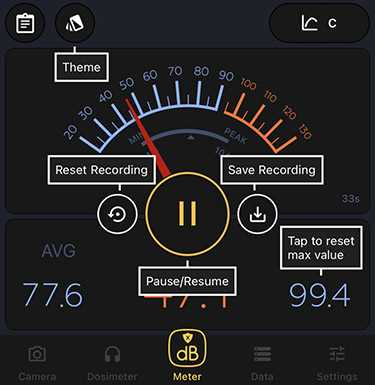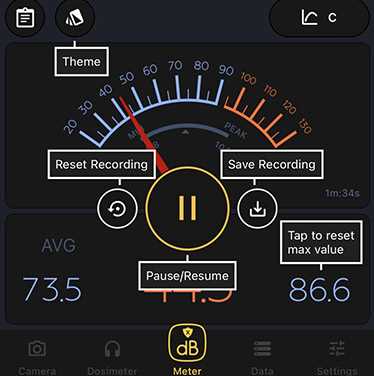![]()
Crosman’s Icon is a new precharged pneumatic (PCP) air rifle.
This report covers:
- Not a Beeman Chief II
- Oops!
- First test — RWS Superdome
- Discharge sound
- RWS Hobby
- Single-shot tray
- JSB Exact RS
- Bolt handle flies up
- Back to RWS Superdomes
- What to do
- Trigger pull
- Summary
I have a lot to report today. This is the day I test the velocity of the Crosman Icon, but some other interesting things cropped up, and this should be an interesting report.
Not a Beeman Chief II
Reader RidgeRunner said the following.
“Well, what TCFKAC has done is what they typically do. They repackaged the Beeman Chief 2 and call it their own. The packaging is kind of expensive also.”
Sorry, RidgeRunner, but I looked it over and the Icon is not a Beeman Chief II. It has some similar features like the bolt and the magazine/single-shot tray. Heck, the mags probably interchange. My Wilson Combat 1911 can use Colt 1911 magazines, too. It would be silly not to make it that way. But you can’t call my pistol a Colt.
The Icon’s trigger and safety are completely different, the rear sight and air tube hanger are different and more. The Icon has a threaded muzzle.
Companies are prone to use existing designs that have worked for them in the past. Look at Weihrauch. There is a lot of similarity among their springers. Or Diana. Remember the 34/36/38, and the 48/52? But it’s too much of a stretch to say the Icon is a repackaged Beeman Chief II.
Today I am testing the Crosman Icon. Believe me — there is plenty to consider here!
Oops!
I got an email late yesterday from Ed Schultz of Crosman. What he told me about the mag and single shot tray was incorrect. Only one of each will be packaged per gun.
First test — RWS Superdome
I filled the reservoir to 3,000 psi and started the velocity test. First to be tested was the RWS Superdome pellet. I’ll show each shot and also give you the average.
Shot……..Velocity
1…………..941
2…………..did not register
3…………..927
4…………..940
5…………..936
6…………..941
7…………..DNR
8…………..949
9…………..952
10..………..941
11..………..DNR
12..………..965
13..………..952
This was a strange string. It had me guessing until later in the test. I shot 13 shots just to get a string of 10, because I could see that the velocity was increasing. I know what happened now, but at this point in the test it looked like the Icon was breaking in. It wasn’t and I will get to that later.
The average for this string was 947 f.p.s. At that speed the 8.3-grain Superdome generates 16.53 foot-pounds of energy. The velocity spread from the string went from a low of 927 to a high of 965 f.p.s. That’s a difference of 38 f.p.s. We will see large velocity variances in the strings throughout this test.
Discharge sound
The Icon discharged with 99.4 dB when fired as it comes from the box. It really isn’t that loud.
When the DonnyFL Ronin silencer was installed the discharge dropped to 86.6 dB.
RWS Hobby
The Icon is advertised as a thousand foot-per-second air rifle in .177. I wanted to find out if it is. So I tested it with 7-grain RWS Hobby pellets that often are the fastest in an airgun.
Hobbys averaged 1004 f.p.s. for 10 shots. The low was 989 and the high was 1012 f.p.s. That’s a spread of 23 f.p.s. It’s the tightest spread of the test. At the average velocity Hobbys generated 15.67 foot pounds of energy.
Single-shot tray
I found the single-shot tray difficult to load. Unless I held the rifle level when loading the pellets often slid back into the bolt channel behind the single-shot tray and jammed the bolt, making me take the tray out and turn the rifle upside-down to dislodge the pellet.
JSB Exact RS
The next pellet I tested was the 7.33-grain JSB Exact RS dome. I won’t give you an average. Instead I will show you the whole string.
Shot……..Velocity
1…………..978
2…………..979
3…………..973
4…………..961
5…………..970
6…………..964
7…………..click! The rifle didn’t fire.
8…………..click! The rifle didn’t fire.
9…………..806
10..………..967
11..………..948
12..………..957
I won’t give you an average for that string because the velocity spread was 173 f.p.s. That’s a bit broad. Since I was loading singly there was no chance for a double feed.
Also, the rifle failed to fire twice on shots 7 and 8. I pulled the bolt all the way back to cock the hammer and the rifle just went click. Then shot 9 went out at 806 f.p.s. I was starting to understand what was happening, but just to be sure I fired another string of 10 RWS Superdomes.
Bolt handle flies up
The bolt handle flies up on every shot. During the velocity tests I held it down to see if there was any difference in velocity and there didn’t seem to be any. It’s bothersome, but not a real problem.
Back to RWS Superdomes
The Icon has now been fired 33 times since it was filled to 3,000 psi. The onboard gauge now read 2100 psi remaining in the reservoir. Half of the green zone of the onboard gauge was still available — down to 1000 psi.
Let me show you the final 10 shots with Superdome that averaged 941 f.p.s. on the first string.
Shot……..Velocity
1…………..923
2…………..923
3…………..923
4…………..919
5…………..917
6…………..913
7…………..909
8…………..906
9…………..903
10..………..900
Do you see what’s happening? Can you see that the Icon is running out of air? Do you now appreciate why having a chronograph is so important?
The Icon is running out of air. It fell off the power curve when I was shooting the JSB Exact RS pellets — maybe on the third shot. That would give it 25 full-power shots on a fill. There could be more if you accept a larger variance in velocity.
I have no idea what the two dry-fires were in the string of JSB RS pellets. They were just there.
Now, what am I talking about that the first string should have shown me that I missed? Well, the velocity went up and then came down again in string number two. This is exactly like many Korean PCP valves, where there really is no flat spot in the power curve. When the valve is like that you have to accept a wider velocity spread than normal, though in the fourth string I think everyone can see that the gun is running out of air.
What to do
I’m not sure of what to do next. I am leaning in the direction of conducting a second velocity test and watching things more carefully, now that I’ve seen the results of this test. One thing I will do next time is watch the onboard pressure gauge more closely.
Trigger pull
I promised a report on the trigger today, but the velocity test threw me off track However, let me tell you where the trigger was as I took the rifle from the box.
The Icon trigger is definitely two stage. And stage two is reasonably crisp. Not as crisp as a glass rod breaking, but crisp enough to do good work. Stage one pulls with 2 lbs. 5 oz. And stage two releases at 3 lbs. 9 oz. I will adjust it for you but not today.
Summary
Where does this leave us? Well, it’s too soon to tell. I think after the second velocity test and the first accuracy test at 25 yards we will know more.
As for RidgeRunner comparing the Icon to the Beeman Chief II with synthetic stock, yes, the Icon costs $70 more, but look what you get for that. Once again, I think it’s too early in the testing to make up our minds.




BB,
“Look at Weihrauch” I’ve got to say they don’t do much of anything in common. Look at the 30, 35, 50, 97.
It’s like a different team made each one.
Edw,
The 30 and 50? Same guns except for the power. The HW 80 and Beeman R1? Same guns except for the name and the stock.
BB
I mean look at the 50 and 30.
One has a chisel detent and 4 fiddly tabs, the other a ball detent and a single screw holding the spring.
From an engineering position those are very different, even with a common barrel diameter and trigger group.
Then toss in the 35, or 97? Totally new and different systems. Sure there are common parts. But they seem like they were all designed by different teams.
BB,
I do agree that the Crosman Icon has a more than passing resemblance to the Beeman Chief II based on looks alone. I would rather judge the Icon on it’s own merits rather than comparing it to the other product. If Crosman used it’s own accurate pre reamed barrels that is enough to differentiate it from the rest. So part 3 will be the trigger and what else is found under the stock? Can you show a picture of the loading tray installed? I don’t quite envision how the pellet would roll backwards to jam the bolt.
Siraniko
B.B.
Is there any way to lighten the hammer spring preload? It would probably make a curve in the shot string, although with some less power output. After a many years affair with Evanix airguns this seems to work every time.
Bill,
I’ll consider that.
BB
B.B.
Bolt problems! Is have a lever cocking more expensive to make than the bolt action?
Levers are soooo much smoother…
-Y
Yogi,
The lever provides you with a mechanical advantage. It is more expensive than a simple bolt action where you are pulling back on the hammer/striker spring directly.
As for the pellet falling back into the action, this is something I have never experienced before. It sounds as if they did a bit too much machining.
P.S. I have encountered levers that were not so smooth, though most will wear in with time.
RR
If the single shot tray isn’t made right the pellet can fall back. Usually Crosman has raised spot that covers the hole by the bolt that looks like a attached washer so to speak. I don’t see that on the Icon single shot tray.
Search Maauder rifle single shot tray and you will see what I mean.
BB,
I sit chastised and corrected. It also sounds as if I myself would not be happy with this air rifle.
BB-
Errata- section- ‘First test-…’, last paragraph, last sentence-
‘We will see large velocity strings….’ Should that be swings?
I rather appreciate the back to back reports. The rememberer seems to cope okay with 24 hr time blocks. No promises made (or kept) about longer time spans. Thanks.
Paco,
Yep! I’ll correct it.
BB
BB,
Strange results, that’s for sure. It would be interesting to see a full string with one pellet as a sort of “baseline” for the gun, without jumping between weights or different sizes. It could show what is happening better.
Also, in the section “First test — RWS Superdome”, in the last sentence I think the word “strings” was really meant to be “swings” . . .
Alan,
That’s my plan for the next velocity test — one pellet throughout.
As for that sentence, both you and Paco hit on it, but I really did mean strings. I rewrote it.
BB
“The bolt handle flies up on every shot. During the velocity tests I held it down to see if there was any difference in velocity and there didn’t seem to be any.”
I have this on my Fortitude G2. I hadn’t thought to check velocity but accuracy is definitely affected.
I’ve dismantled and retightened it twice. The second time I used blue loctite. It is starting to need a third retightening. I will use more loctite this time.
MisterAP,
Some people use a rubber band around the bolt handle, run down to the trigger guard.
BB
Great idea! Thanks! I will have to try it out!
MisterAP
I rest my pointing finger on the bolt and use my middle finger on the trigger.
I’ve been using my thumb 🙂
MisterAP
Yes I was just getting ready to say that.
I have bigger hands. But yes the thumb is easier to do than the pointing finger.
Also though try some oil on the bolt breech o-ring. Sometimes that stops the bolt handle lifting. And if it don’t the oil helps seal the oring to barrel better and helps accuracy.
Try poking a short length of monofilament fishing line into the threaded hole and then running the bolt in. Generally more secure than loctite and doesn’t break apart/decompose like a rubber band will. Works like a nylon lock nut.
BB,
My Maximus has a problem with the bolt popping up and I worked around that by installing a piece of vinyl tubing on the bolt stem between the receiver and the bolt knob. The tubing is long enough that it is compressed a bit and holds the bolt in place.
I suspect that the misfires are caused by internal burrs and will likely go away as the parts lap themselves. A bit of cleaning/polishing often does wonders and reduces the velocity spread.
I bought the Maximus for my granddaughter (so I could get my HW100 back) but she found it to be too difficult to cock. I much prefer side-lever cocking for its mechanical advantage …as did she so I have to choose another rifle when we plink together LOL!
I know that sticker price is a big concern to manufacturers but I feel that the Icon would be much better with a regulator. After reading customer views on various PPPCPs I think that a major portion of the sales are to people (attracted by high velocity numbers) who have no understanding of how PCP valves work and don’t own a chronograph. For their benefits increased shot count, better consistency and fill-and-forget ease of use. I installed a HuMa regulator in my Maximus for those reasons. I’m surprised that regulators aren’t standard in PCPs as they aren’t that complex and can’t be that expensive to make. Maybe a “Deluxe” Icon with a reg and a wood stock could be offered.
…Just saying that the lack of a regulator is a deal breaker for me.
Curious about the accuracy testing, looking forward to that.
Hank
Hank, when the bolt popped up, was accuracy affected? Velocity?
Best,
AP
MisterAP,
Yes, the major changes in velocities were seriously affecting accuracy.
Hank
MisterAP
I mentioned that on the other days report that if the barrels that use a oring in the breech end of the barrel gets damaged or the oring blows out it will cause accuracy problems.
I lube that oring religiously!! The Bandit, Fortitude & SAM have it. I don’t think the Texan does.
MisterAP
I wouldn’t go crazy with the lube.
It’s just like putting some drops down the barrel if you start seeing a accuracy change to help.
I have used to much oil in the barre and it seemed to get fouled. And that’s with different brand pellets even. What that means is my accuracy got worse. Do just enough to keep it lubed. See the o-ring dry. Use some.
B.B.,
Shooting only one pellet for the entire follow-up velocity test is certainly the correct way to remove one variable of many.
I’ll add a guess that there is a loose object in the valve or action as another theoretical possibility.
My first gut reaction was an overlong hammer/Striker spring but no real reason for jumping on that!
One final thought would be to tether the Icon to a regulated air supply (if you have one) for at least a ten shot string and see how it performs.
Your second velocity test will hopefully prove more instructive.
shootski
All,
On the velocity thing you all are talking about. I belive that the gun needs broke in more.
The barrel, the bolt, the barrel bolt o-ring the valve seat and valve also.
BB shoot the gun some more before we all start worrying about changing things on the gun.
And to top it off I would try a different pellet. And in this guns case since the velocity is getting high I would go with a heavier tighter fitting pellet to slow the velocity down.
Doing all the above should give a tighter spread and all should give better accuracy.
Maybe BB you should just go to a 25 yard test and see how the gun does as is. Which will help it break in more. Then go to the heavier tighter pellet and chrony it and see if it tightens the spread up. Then do another 25 yard accuracy test.
I have ended up using a wider range of fill pressure after doing the above with pcp’s also.
Oh and read my comment above to MisterAP about what I do with bolt handle lifting with my guns that it happens with.
B.B. and Readership,
Bolt lift is usually the result of a design flaw or a manufacturing failure. A larger bolt knob works, sometimes, as well as something on the stem to make its cam action work better. There are some receivers that have spring, ball, and detent(s) to capture the bolt…e.g., Dennis A. Quackenbush products.
Guys, for the temporary fix, look at your better half’s elastic hair bands. The bands are usually cloth covered come in colors, various thicknesses, as well as lengths.
shootski